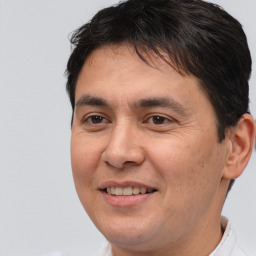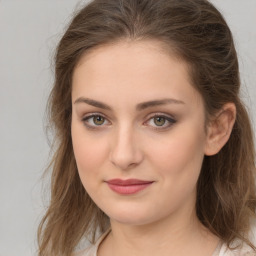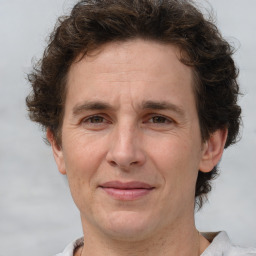This sample will let you know about:
- Define Body's response to injury.
- What is Pathophysiology?
INTRODUCTION
This is the report regarding the information sheet for the clinicians where it focuses over the aspects of human body like Role of immunological responses in different aspects like inflammation, infection, hypersensitivity, autoimmunity and immunisation; Body's response to the cell and tissue injury: comparison of microbe types, infection control and public health; pathophysiology of degeneration and ageing; and pathophysiology, aetiology, pathogenesis of common health disorder studied.
Immunological response
Human ability has it's own ability to detect the presence of the foreign pathogen that can cause the harms and create Example of Assignment it ow defence mechanism against that pathogen and this is known as Immunity. These responses are known as immunological responses and can also be defined as fight & flight mechanism of the body.
Infection- To fight the injections, first immunity system identify the as antigens and rapid reaction is provided by "innate immune response".
Inflammation- Next step in this is inflammations, which are resulted from signal released by body in response to infection.
Hypersensitivity- This is response of "acquired immune response" that is slower than innate but targets pathogen better, where they produce the hypersensitivity reactions, in order to dispose them.
Autoimmunity- When the immune system of body becomes inimical and starts to attack its own healthy cells and tissues, leading to destruction of the good health.
Immunisation- It is the most important mechanism of immune system, where the immunity is conferred in order to increase the capability of the immune system to fight the harmful agents (Bandyopadhyay, Das, & Chattopadhyay, (2022)).
Body's response to injury
Cell Damage- In the case of cell damage, body tries to repair or replace the cell in order to continue the normal working of the body. This leads to the generation of two types of mechanism-
- Regeneration: Process of regrowth of the cell that is damaged due to the injury, without harming any organ or tissue.
- Replacement: If the cell is not able to regenerate, then the body starts replacing the cell with stromal connective tissue to maintain the normal functioning.
Tissue Injury- The standard response of body for this is inflammation. This helps in limiting the extent of the injury by eliminating the cause of injury and start the repair and regeneration of the damaged cell (Baust, & et. al., (2023)).
Different Types of Microorganisms with relation to immunity and infection
Some of the classes of microorganisms that cause the harm to immunity system and infection are (Ruff, Greiling, & Kriegel, (2020))-
|
Viruses |
Bacteria |
Fungi |
Protozoa |
Helminths |
|
Most deadly type of microbes that are responsible for SARs, chicken pox, herpes, measles, cold, mumps, AIDs etc. |
They cause strep throat, TB, staph skin, urinary tract infections, etc |
They are organisms that range from bread mold to deadly hisotplasmosis, and cause diseases like malaria and dysnetry. |
These single cellular organism cause giaridia, toxoplasmosis, etc. |
Most common infections of this are Ascaria, trichuriasis and they cause variour intestinal and GI tracts infections. |
Pathophysiology of degeneration and ageing
"Ageing Pathology"- This Specific area covers the aspects of health and disease that typical for old age, followed by covering that aspects of the primary causes. This also deals with understanding what can be done avoid the major health issues that increase the difficulty during the old age. During the ageing, there is a progressive degeneration of cells and there is loss of regeneration capacity is Assignment Help enhanced and with passing, this reason leads to death. Physiology of ageing includes changes in appearance, gradual reduction in height ad weight, l (Fleckenstein, & et. al., (2021))oss of muscles, lower metabolic rate and longer reaction rate.
Pathophysiology,Aetiology, Pathogenesis of common health disorder studied
Mumps is a contagious viral illness that caused by paramyxovirus. It is a systematic disease that can be tackled by mumps vaccine.
Pathophysiology
This disease is transmitted by respiratory droplets , direct contact or by contaminated Fomites. The Incubation period for this disease is 14-18 days. The symptoms of the disease depends over the organ is defected. The most common presentation is a parotitis which is relevant for 30-40% of the patients. Some of the common sites of infection are testes, pancreas, eyes, ovaries, CNS, joints and kidneys.
Aetiology
It is caused by virus named Rubulavirus, which belongs to the family of paramyxoviridae. Majority of the cases are seen in late winter and early spring.
Pathogenesis
This disease is acquired by respiratory droplets. It tends to replicate in nasopharynx and regional lymph nodes. After the end of incubation period, viremia occurs, that lasts for 3-5 days. During this stage, the virus spreads through multiple tissues that can include meninges and glands.
Prevention on the basis of Environmental factors
It order to prevent the disease, some of the environmental factors that need to taken under control are-
- Avoid living in densely populated area.
- Avoid living in closed quarters.
- Make sure practice the social distancing
- Keep the surroundings clean (Kleinschmidtâ€DeMasters, (2020)).
CONCLUSION
To conclude the report, it can be said the person's immunity plays crucial role in the fight & flight against any kind of disease. Cell and tissue damage are treated by the human by two different mechanisms, regeneration Science Research Topics and replacement. Major cause of the mumps is virus and is very dangerous due to the fact that it is communicable disease. Proper measures and vaccination can help in control of the disease. The report also discussed some of the major micro organisms that are related to immunity and infection.
REFERENCES
- Books and Journals
- Bandyopadhyay, P. K., Das, N. R., & Chattopadhyay, A. (2022). Biochemical, Immunological and Epidemiological Analysis of Parasitic Diseases. Springer.
- Baust, J. G., Santucci, K. L., Snyder, K. K., Robilotto, A., & Baust, J. M. (2023). Mechanisms of tissue injury in cryosurgery. The Application of Heat in Oncology: Principles and Practice, 45-71.
- Fleckenstein, M., Keenan, T. D., Guymer, R. H., Chakravarthy, U., Schmitz-Valckenberg, S., Klaver, C. C., ... & Chew, E. Y. (2021). Age-related macular degeneration. Nature reviews Disease primers, 7(1), 31.
- Kleinschmidtâ€DeMasters, B. K. (2020). Rubella Virus. Infections of the Central Nervous System: Pathology and Genetics, 105-111.
- Ruff, W. E., Greiling, T. M., & Kriegel, M. A. (2020). Host-microbiota interactions in immune-mediated diseases. Nature Reviews Microbiology, 18(9), 521-538.
Read More- Support Learning Activities












